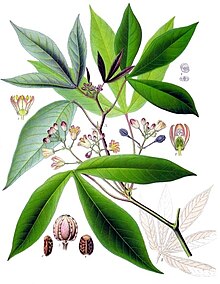Pineapple Cake
Pineapple Cake
Ingredients
1 cup butter or margarine
1 ½ cups sugar
6 eggs
2 cups flour
2 teaspoons baking powder
½ teaspoon salt
1 can Pineapple Slices (cut
into small bits)
2 teaspoon Pineapple Juice
Method
1.
Preheat the oven to 350°.
2.
Grease and flour loaf pan, sheet pan or layer pans.
3.
Cream butter until light and fluffy.
4.
Gradually add sugar, beating well until fluffy.
5.
Add eggs, one at a time, beating after each addition.
6.
Add pineapple juice and pineapple bits.
7.
Blend or fold in sifted dry ingredients gradually.
8.
Pour batter into prepared pan.
9.
Bake in a 350° oven for
approximately 1 hour or until a wooden pick inserted in center comes out clean.
10.
Let cool in pan 10 minutes.
11.
Remove from pan.
12.
Let cool completely on a wire rack.
13.
Optional – Icing, frost, sprinkle with
powder sugar, garnish etc. to your choice or likings.
Pineapple Cake was made and prepared by Shirley-Ann Pearman
Photography by Shirley-Ann Pearman
Cake recipe came from my Aunt Ida Spenser to which she gave me many
years ago in my teenage years. She often
made this particular cake on many occasions while being at her house as a child
growing up. She either served it plain or marbled; or with frosting or icing. She often
made it in the fruitcake (mixed peel and raisins soaked) variation as well.
Excluding the pineapple, I just decided when making this to add the
pineapple. She made it with vanilla
flavoring and plain.























